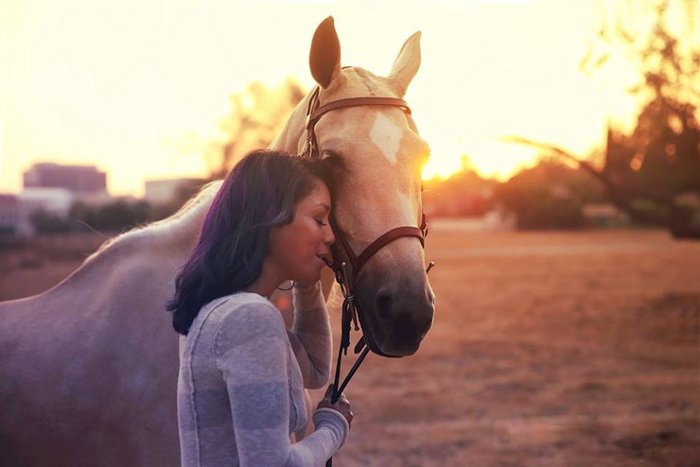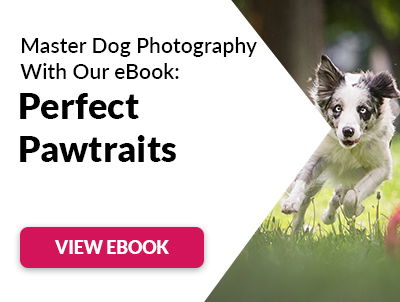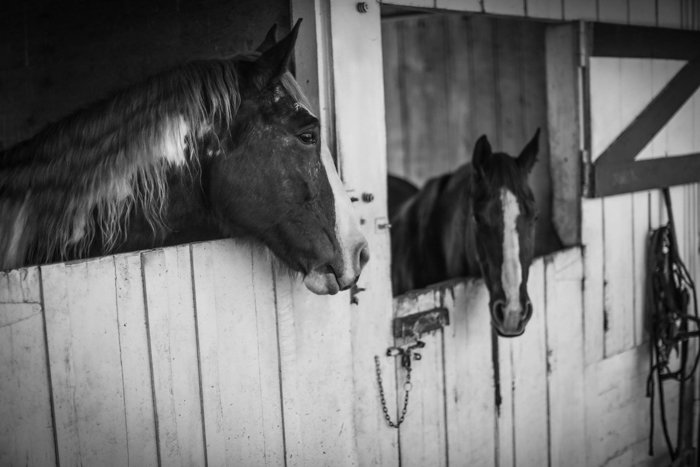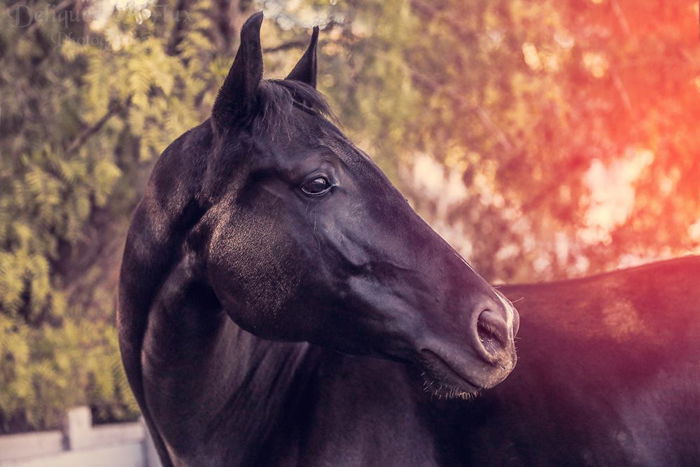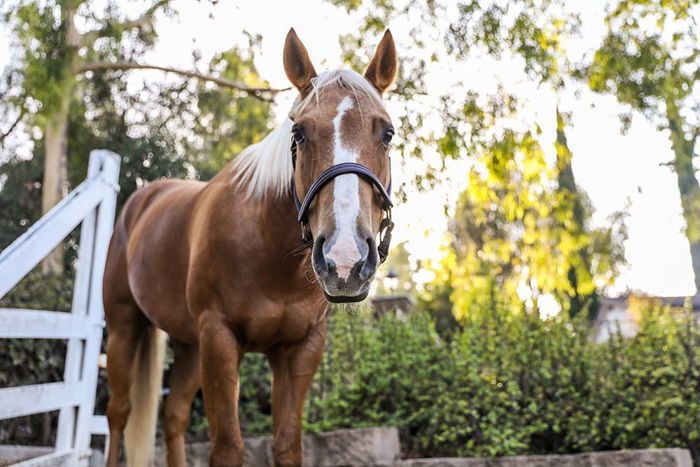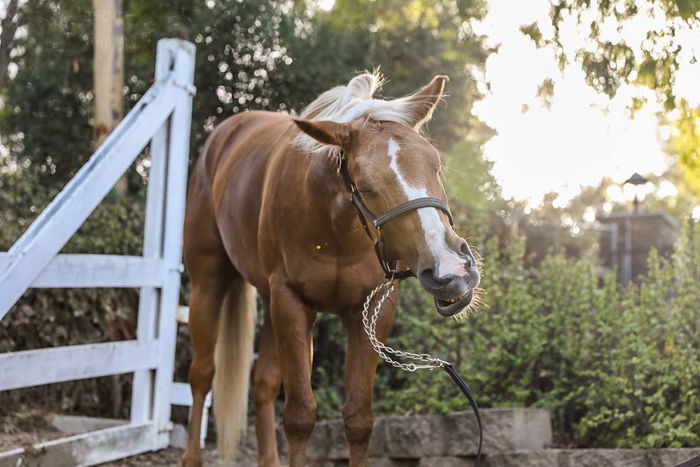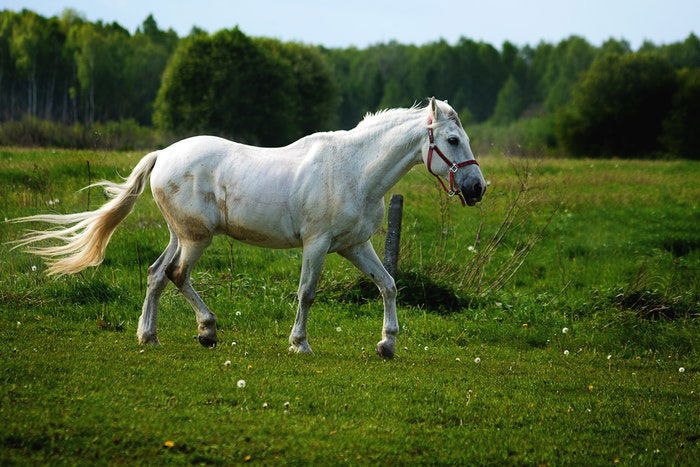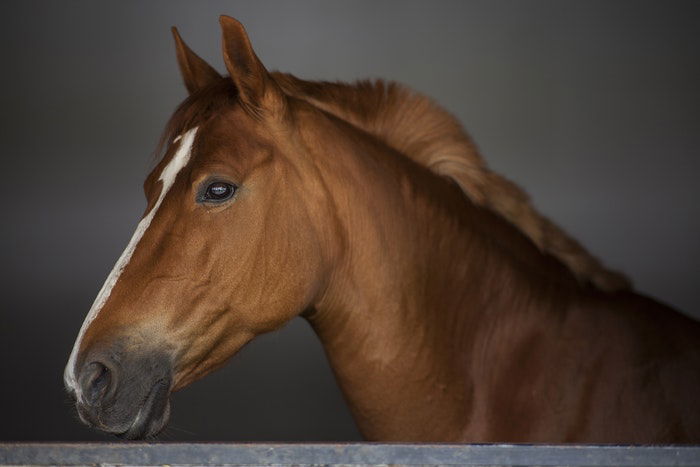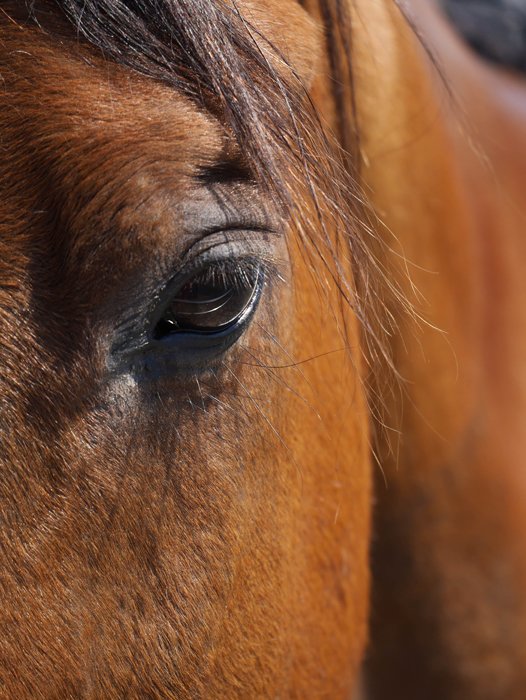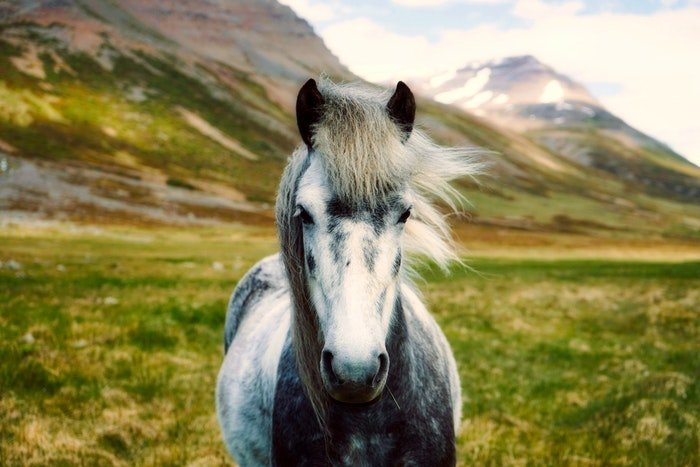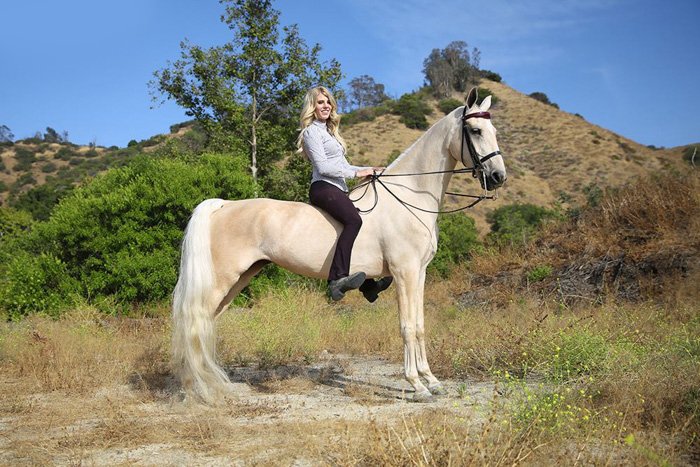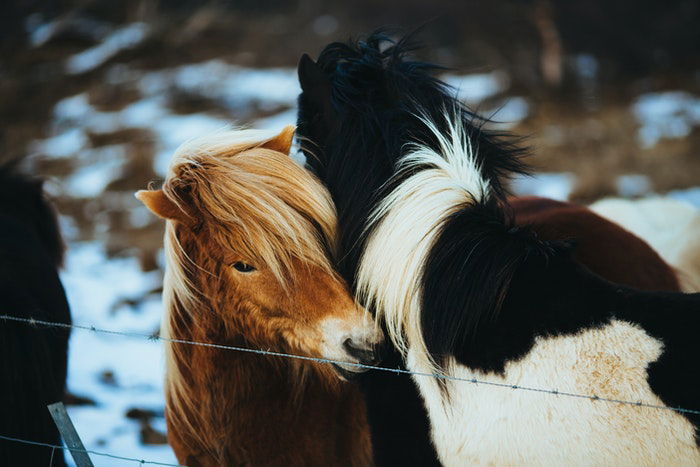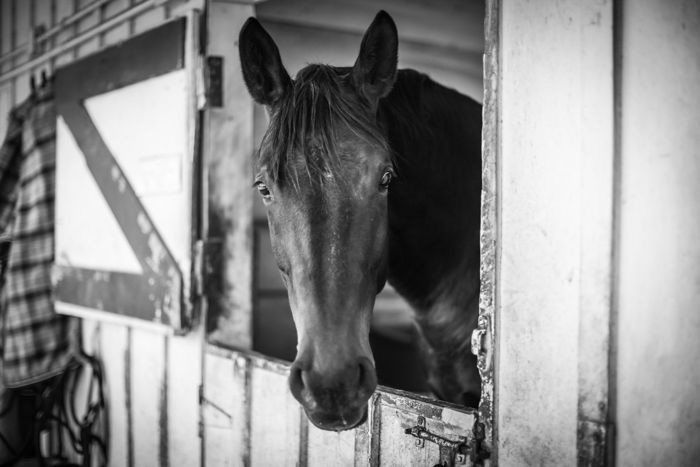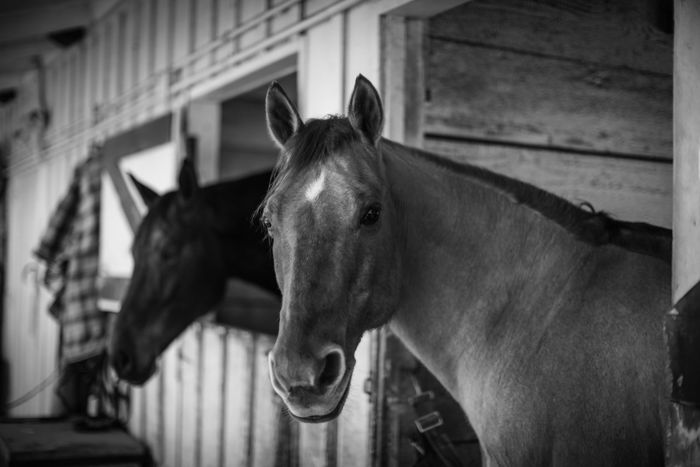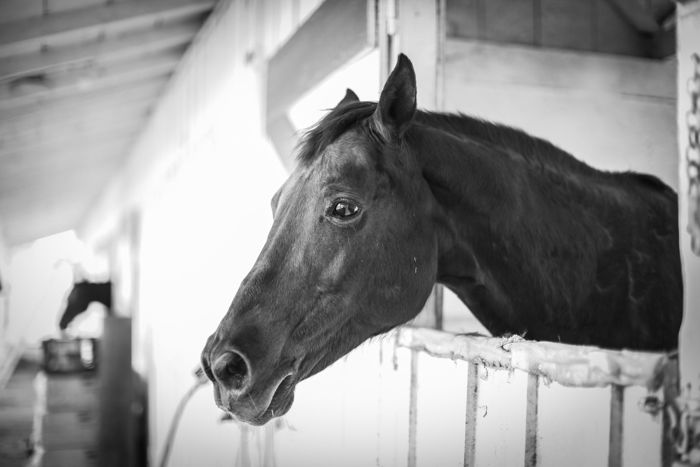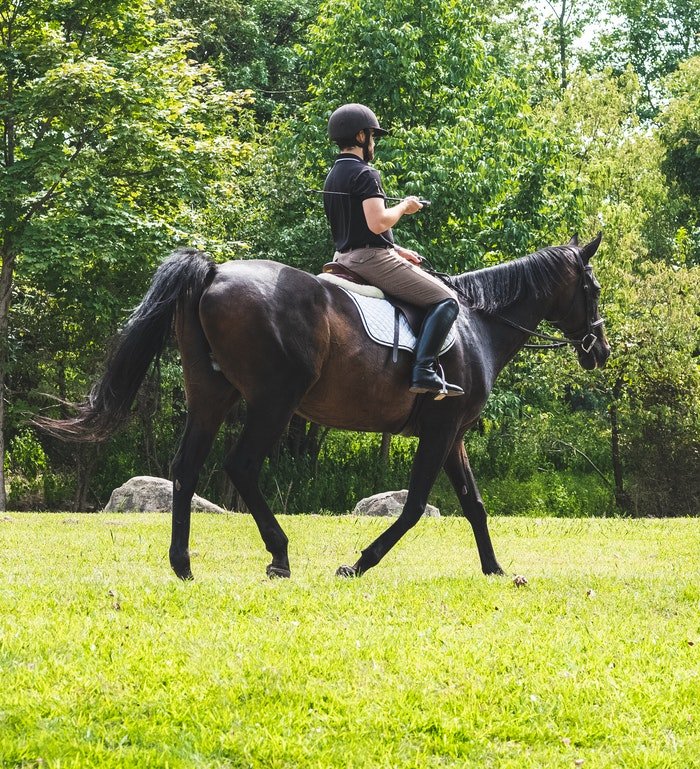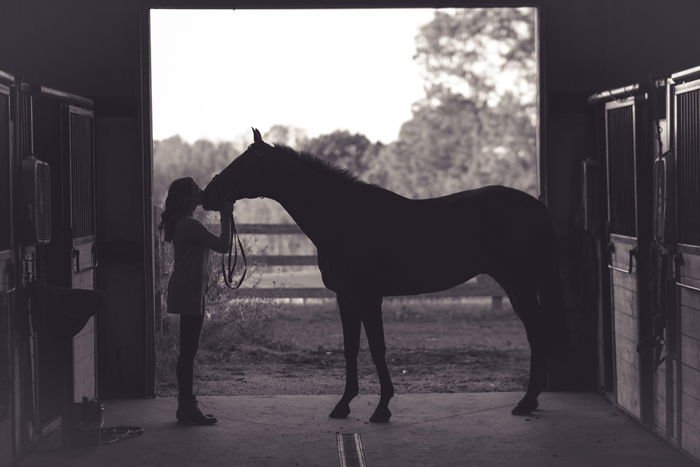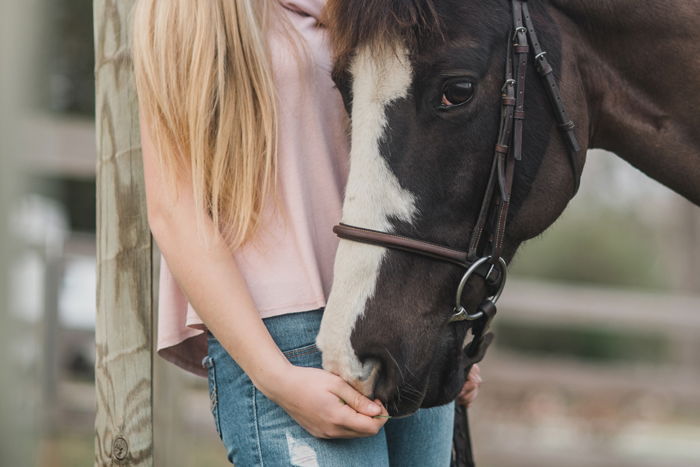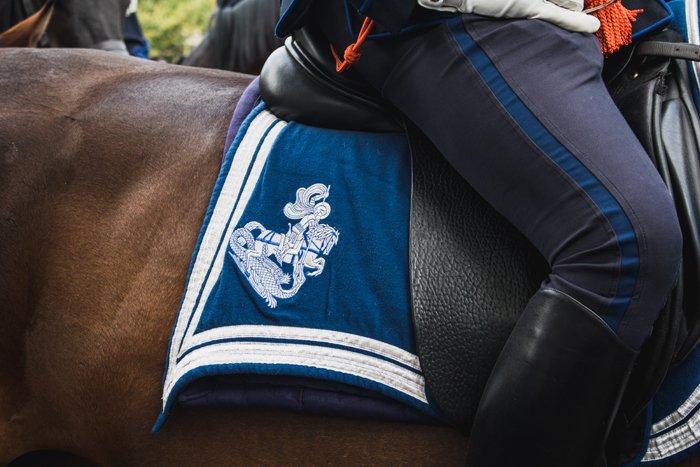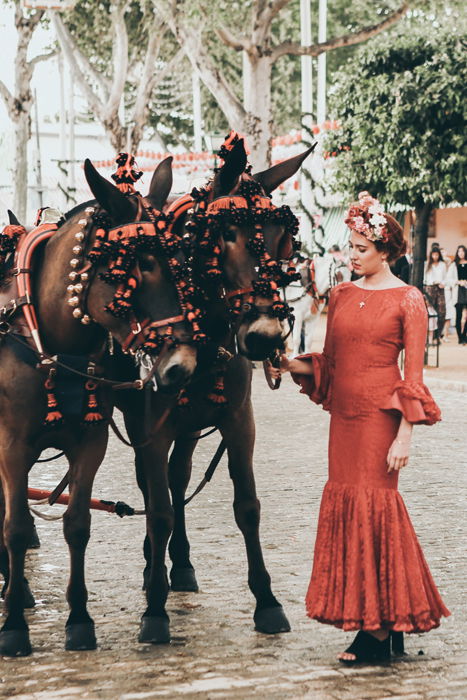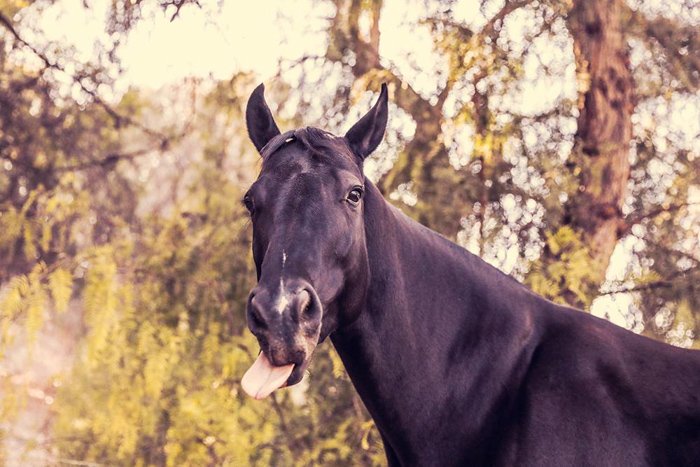Horses are some of the most beautiful animals in the world. They have majestic movements and a graceful presence. As such, these magnificent beasts make lovely subjects for photographers. Here are our top tips for horse photography!
15. Horse Photography: Becoming Comfortable With Horses
Animals pick up on your emotions, especially intuitive creatures as horses. Your response to them will affect their response to you. You have to remember that horses are prey animals. If you are acting uncomfortable, fearful, or anxious, they will become nervous as well. This is a biological response based upon their nature. Herding animals rely on one another’s emotions to notice if there is a predator around. Likewise, if you act very threatening to a horse, they will become spooked. On the flip-side, the horse will pick up that you are unsure of what you are doing and are not in control. As a result, it may misbehave or take advantage. Spend time with horses before attempting to photograph horses! Talk to equine experts and equestrians, and learn as much as you can about this beautiful species!
14. Pay Attention to Safety
Safety is very important in animal photography. Safety goes both ways. You have to ensure that you and the horse are both protected. Make sure you listen to the equine’s handler, they will know their horse the best. Follow their directions, respect their limitations, and don’t cross the boundary. When spooked, upset, or frustrated, horses can bite, kick, or trample.
Alongside paying heed to their handler, be attentive to the horse’s reaction to your behaviour. No photograph is worth an upset animal. Our priority should always be the welfare and well-being of our subjects. A good suggestion that I use for my own work is arriving at a photo session early. Allow the horse to get to know you a bit better, as well as your gear. At the discretion of the horse’s owner, give the animal some treats, a happy rub, and let them check out your camera! Make a couple of shutter noises to gauge the reaction. If the horse is feeling anxious over the clicking, switch to a telephoto lens and photograph from far away.
13. Choose Equipment to Compliment Proportions
Speaking of lenses, you have to choose horse photography gear that compliments horses’ proportions. There is a heavy focus on the proper positioning and the aesthetic of the horse. As such, you should steer clear of any form of distortion lens. That means no wide angles or artistic lenses. You’ll likely find yourself using standard lenses. This normal lens produces an image that roughly matches what the human eye sees. Hence, the image looks natural to the viewer. Standard lenses have an angle of view of around 50 to 55 degrees diagonally. They also tend to have wide-open apertures, making them great for low light and shallow depth of field. An awesome standard focal length for horse photos is the 50mm. Telephoto lenses are another must-have for your horse photography kit. You can sit far back and not disturb the horse while taking pictures. Telephoto lenses are also useful for action photography. They produce a natural perspective. The result is free from the distortion caused by using a wide-angle lens. A popular telephoto lens is the 70-200mm. Of course, this tip is a guideline. I, myself, have taken some excellent wide-angle and fish-eye distorted photographs of horses! But the majority of this was not client work. Bonus advice: Don’t forget the put a filter on your lens! Stables tend to be quite dusty. Always have a lens cloth on you as well.
12. Use Burst Mode and Continuous Focus
As much as the gear matters, how you use it matters more! Much like photographing any animal, there are certain settings that I’ve found work great for equine photography. Switch the camera to burst mode and continuous focus. This works best for photographing horses in action. The burst setting is a must when animals get excited and start running or playing. The continuous focus has different names depending on the camera brand. It is AI Servo for Canon users or AF-C for Nikon users. It allows your camera to follow your subject around as it moves. Animals blink, turn their heads, and move around at the most inopportune moment. You can ensure you get the right shot by setting your camera to burst mode. This allows you to take several photographs in a row while pressing down on the shutter. Once you get the settings locked in, technique comes into play. Keep in mind that the goal is to keep the horse in a proper aesthetic perspective. Try photographing from the equine’s eye-level as much as possible. This aids in keeping the body looking proportionate. Viewers are more empathetic to images taken from the same perspective as the subject.
If you are photographing horses in action, panning will be your best friend. Panning is moving your camera horizontally with the subject’s movement. You synchronise your camera movement with that of the subject moving parallel to you. Make sure your shutter speed is above 1/2000 to freeze that flowing mane! As for the compositional aspect, horses always showcase an immense amount of movement. Although a photograph freezes the moment, the viewer can still imagine the next subject’s next step. Leave enough negative space in the direction you expect your subject to move. It will make it seem like it’s bouncing off of the photograph. If you crop the photograph in such a way that there is little negative space, the image will feel caged.
11. Be Careful When Using Flash
If you’re a beginner horse photographer, try to avoid using flash. Use natural light when possible. You can take the best photos during the morning and just around sunrise. If you have to use flash, always ask the horse owner/rider first. Some horses are used to flashes because of the competitions or photo shoots they attended. But many of them can get spooked by the sudden light.
10. Don’t Forget Detail Shots
As much as full body or portrait photographs are wonderful, don’t overlook the details. The awesome thing about photography is to capture something that goes otherwise unnoticed. An image of a horse’s eye, bridle detail, or ear can be just as unique and interesting. This allows the viewer to see life from an otherwise ignored perspective.
9. Choose Backgrounds Wisely
A fundamental tip for any type of photography, be mindful of your background. If your background is too similar in color to your subject, your image falls flat. It is the contrast between foreground, subject, and background that creates interest. It is understandable that as photographers, we cannot always control locations. For horse photographers, it is common to be photographing within a barn or stables. Not all horses are comfortable in new environments. Also, not all owners have trailers, and not everyone lives on a large nature property. This is where your adaptability and creativity comes into play.
Find new and unique ways to work with the parameters given to you. Try a wide-open aperture to blur the background! Use post-processing techniques to separate the subject from the rest of the elements. A good example would be photographing a dark brown horse within its shadowed stall. I would suggest overexposing by a stop or two. Adjust the richness of the colors in post-processing to separate the subject from the location.
8. Consider the Type of Horse You’re Photographing
Different horse breeds have different specifications. This is particularly important if you want to step into the world of horse shows. Ask your client what breed of horse you will be photographing, and Google that breed. This will give you better insight into the characteristics of the horse and what to consider during your photo session.
7. Capture the Animal With Ears Up
Ears up, up, up! This is true for many types of animal photography, from dogs to rats. Ears up make the pet look alert, happy, and engaged. With horses, many owners will not use images with their horse’s ears down. Ears forward on a horse compliment the composition of their heads and show the horse being confident. You can use rustling bags, food, clicks, or sounds from your smartphone to get the attention of a horse and raise those ears. It’s that simple!
6. Tension Poses Look the Best
Horses are known for their elongated necks and muscular physique. Tension is the key for good portrait shots of horses. Try to make the horse bend its neck a little so that the animal looks more agile and elegant. Using a treat, you can have the horse handler entice the horse to bend its neck forward. When posing a full-body, having the horse bend or strain will bring those muscles to the forefront. This may take a bit of finagling, but the end result is well worth it.
5. Learn to Direct Horses
Likely the make-or-break part of your photo session. Due to their massive size and location limitations, there may be complex shooting situations. Being able to communicate with the horse’s handler and having some direction tips up your sleeve will work wonders.
If taking a posed horse photo, be very clear on where you want the animal to stand or look. Pay close attention to lighting and compositional elements. It is a good idea to have an assistant distract the horse into looking in the proper direction.
4. Capture Some Action
An obvious place for action shots would be a show or a competition. But you can capture some motion during an average riding lesson too. These animals have a very graceful and muscular body that you can show in your photography. You should stand further away so you have some space in your frame for the movement. Ask the rider do some galloping while you take photos. Horses usually prefer to move in the direction of the entrance of the paddock as that’s their way “home”. If you want to take shots where the horse moves or canters alone, it’s easier to make it move from the other end of the paddock towards the entrance. This is a fairly easy set up for the owner as well. Bring the animal to the best starting position from where it has some space to run towards the arrival point.
3. Take Portraits to Show Intimacy
Owners and riders get very close to the horses. They form a bonding contact and become partners. Capture the moments when the rider and the animal share this intimacy. It can be after the riding session or during cleaning. Take some portrait photographs to highlight their connection. Make sure you are invisible so you don’t bother their interaction. It shouldn’t look too artificial and cheesy. A look, a touch or whisper in the animal’s ear says enough.
2. Create a Matchy-Matchy Style With the Rider
Everyone knows that dogs tend to look like their owners. You can create the same impression of horses too. You don’t need to find a perfect match for this. You can ask the rider to wear clothes or accessories of the colors that match the animal or its equipment.
If the horse is a calm type and the rider agrees, get them a matching braid. Make it obvious where the expression ‘ponytail’ comes from. You don’t want to make the animal look ridiculous, though. Just use simple tools such as the saddle or the bridle. If you want and the rider is up for it too, you can give the animal a carrot, and the rider can have the same. Capture them while they are both having a snack.
1. Show the Horse’s Personality
At the end of the day, the horse photos that speak volumes are those that capture the soul of your subject. This means not being afraid of candid and personality horse photos! Don’t put your camera down immediately after taking a majestic shot. Keep it up if the horse engages with you or their owner in a cute or silly way.
Conclusion
If you’re looking to take your horse photography skills up a notch, or are just starting out and want some tips on how to make your photos look beautiful, we’ve got you covered. We hope these 15 horse photography tips help you capture stunning images of your favorite equine friends. You will improve your photography in no time!
